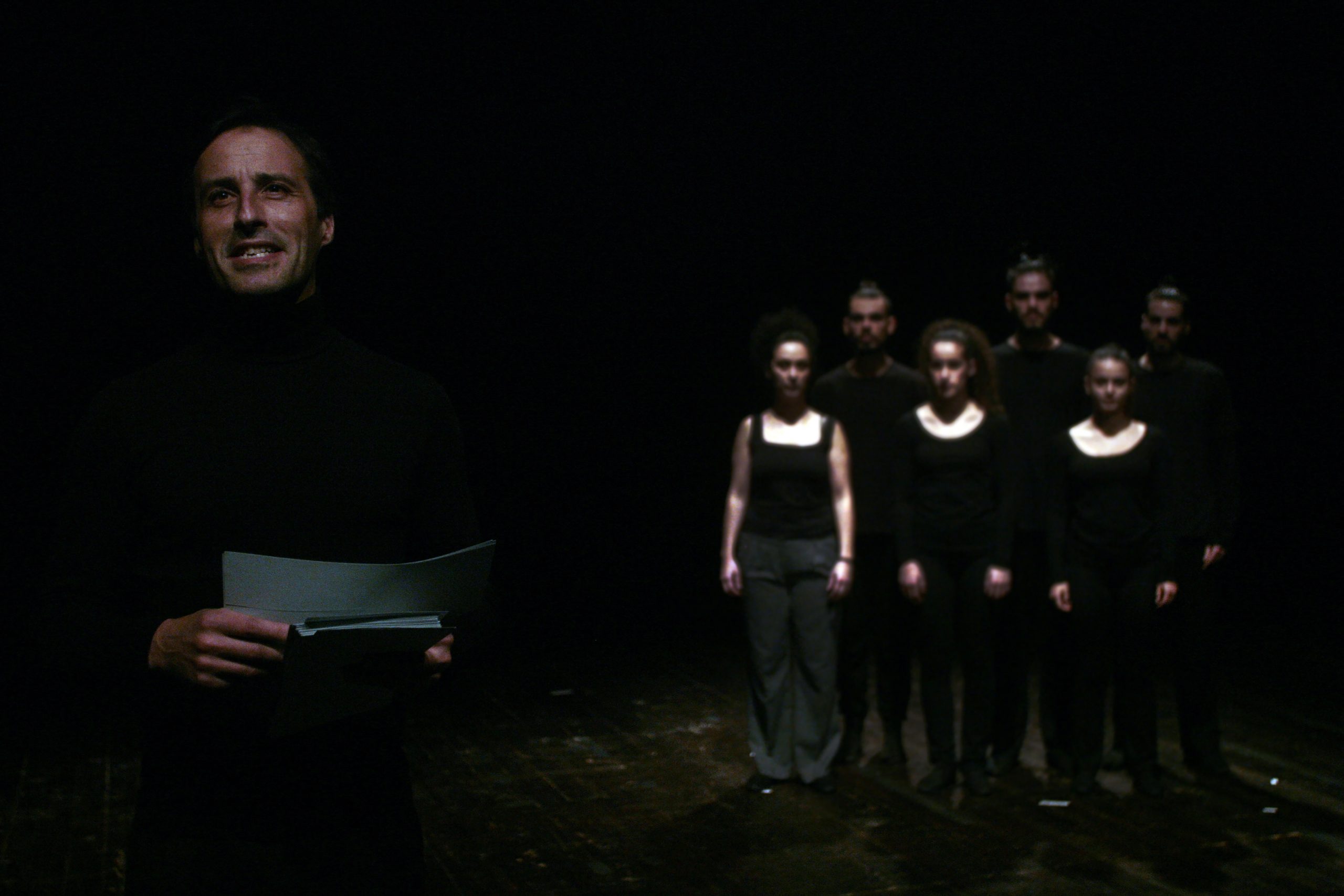Um grupo de arqueólogos das emoções procura recuperar emoções do passado recorrendo a técnicas teatrais para a representação de emoções. Ao enorme desafio de recuperar sentimentos há muito vividos e desaparecidos, soma-se um outro, o de lidar com as próprias emoções no processo de investigação. Como poderia dizer um ditado: quem mexe com as emoções, não sai incólume.
+INFO
Teatro da Cerca de São Bernardo | Coimbra
25 a 27 de novembro de 2014 | 21h30
Classificação etária | M/12
Duração | 1h30
Bilhetes | €10 / €6 desconto estudantes, < 25 anos, ≥ 65 anos, profissionais e amadores de teatro, profissionais de ciência, grupos de de 10 ou mais pessoas / €5 grupos de 20 ou mais pessoas, entidades protocoladas TCSB
Folha de Sala
Em 1872, Charles Darwin publicou a sua obra “The Expression of the Emotions in Man and Animals” onde apresenta o seu estudo sobre a relação entre as expressões faciais e estados emotivos de pessoas e animais. Uma das fontes para a sua investigação foi o trabalho do médico e fisiólogo francês Guillaume Duchenne que na sua obra “Mecanisme de la Physionomie Humaine” apresenta o resultado das suas experiências onde aplicava choques elétricos em determinadas zonas da cara de pacientes para identificar os músculos envolvidos na expressão de determinadas emoções. A sua obra é acompanhada por imagens fotográficas das experiências, que Duchenne considerava o melhor método para o registo deste seu trabalho. Foram estas imagens que Darwin, uns anos depois, utilizou numa experiência num serão caseiro com um grupo de amigos, pedindo-lhes para identificar a emoção na expressão dos pacientes das imagens de Duchenne. Os resultados da investigação de Darwin apontam para uma universalidade no reconhecimento das emoções ditas básicas (tristeza, raiva, surpresa, medo, nojo, desprezo, alegria).
Os modos de expressão e comunicação entre seres humanos têm evoluído de modo drástico nos últimos anos. Na altura das experiências de Duchenne a câmara fotográfica era invenção recente, introduzindo um novo suporte para a comunicação de imagem que Duchenne rapidamente adotou. Hoje, a par dos modos de comunicação à distância em que criamos e desfazemos laços sem olharmos as rugas do outro na cara, temos a criação de alter-egos computacionais, avatares que vestimos e que utilizamos para nos relacionarmos com outros seres humanos e que já conseguem captar e reproduzir as nossas expressões em tempo real. Uma pele virtual.
Tendo como ponto de partida estas referências e as fotografias das experiências de Duchenne, a ideia base para a nossa “A Expressão das Emoções” foi a de criar um dispositivo experimental, para o qual, à semelhança de Darwin, convidamos o público, que leve à perceção e provoque a reflexão sobre os modos como nos comunicamos e nos exprimimos, sobre as cambiantes e os desvios entre a expressão de uma emoção e um estado emocional mental, sobre o que construímos com base naquilo que pensamos que o outro está a sentir.
Sendo o palco teatral um dispositivo criado e ainda frequentemente usado para a expressão de emoções, a nossa abordagem a este tema usando este suporte inclui necessariamente uma meta-análise sobre o meio de expressão e comunicação que é o teatro.
Em paralelo à peça de palco, e em torno do mesmo tema da expressão das emoções, desenvolveu-se o LabX – Laboratório Experimental de Fotografia, orientado pela fotógrafa Susana Paiva e com a participação de um grupo de onze voluntários, cujos primeiros resultados serão partilhados a par da apresentação da peça de teatro no Teatro da Cerca de São Bernardo. Constituem mais um conjunto de olhares, reflexões e provocações sobre o tema da expressão das emoções.
Será um conjunto de experiências intensas. A não perder. São só três dias, como o Carnaval.
Discussão e Ideias Beatriz Dias, Dara Couceiro, Guilherme Lima, Inês Almeida, Marcos Marques, Mário Montenegro, Miguel Silva, Paula Rita Lourenço, Pedro Andrade, Teresa Girão, Susana Paiva
Interpretação Beatriz Dias*, Dara Couceiro*, Guilherme Lima*, Marcos Marques, Mário Montenegro, Miguel Silva*, Paula Rita Lourenço
Texto e Encenação Mário Montenegro
Cenografia, Figurinos e Imagem Pedro Andrade
Fotografia e orientação do LabX — Laboratório Experimental de Fotografia Susana Paiva
Banda sonora original Marcelo dos Reis
Desenho de Luz e Direção Técnica Mafalda Oliveira
Fotografia de Cena Francisca Moreira
Penteados Carlos Gago – Ilídio Design
Produção executiva Teresa Girão
*estagiários – alunos do Curso Profissional de Artes do Espetáculo do Colégio de S. Teotónio
Apoios
Câmara Municipal de Coimbra
Fundação Bissaya Barreto
Ilídio Design Cabeleireiros
MAFIA – Federação Cultural de Coimbra
TCSB – Teatro da Cerca de São Bernardo
Bonifrates Grupo de Teatro
CITAC
TEUC
Rómulo Centro Ciência Viva
Colégio de São Teotónio
Rádio Universidade de Coimbra
Dolce Vita Coimbra
Bloco de Esquerda Coimbra
Agradecimentos
A Escola da Noite, Condomínio Criativo de Coimbra, Rómulo – Centro Ciência Viva da Universidade de Coimbra, Laetitia Morais, Rui Telmo



